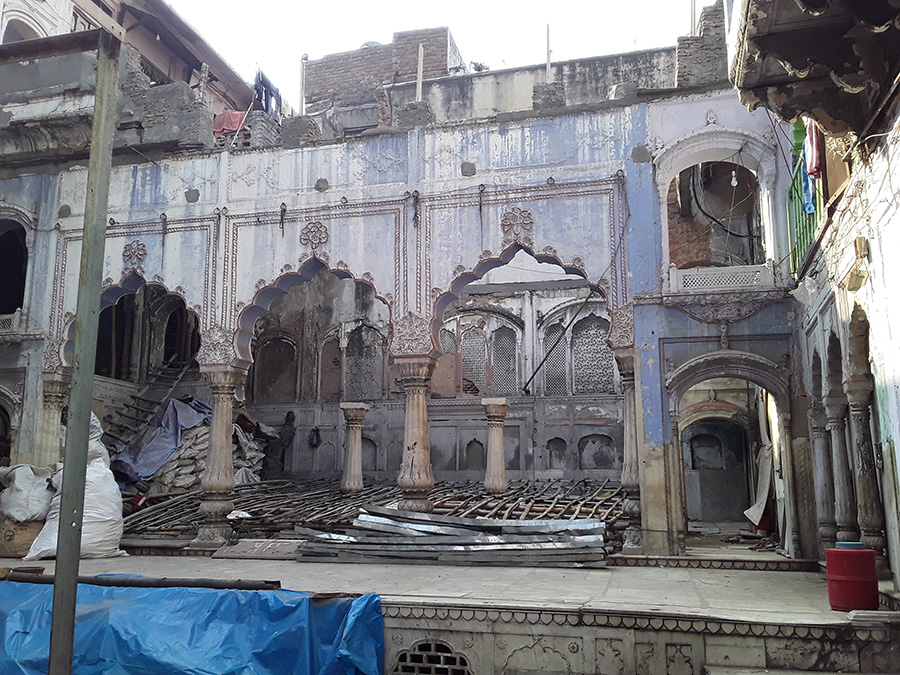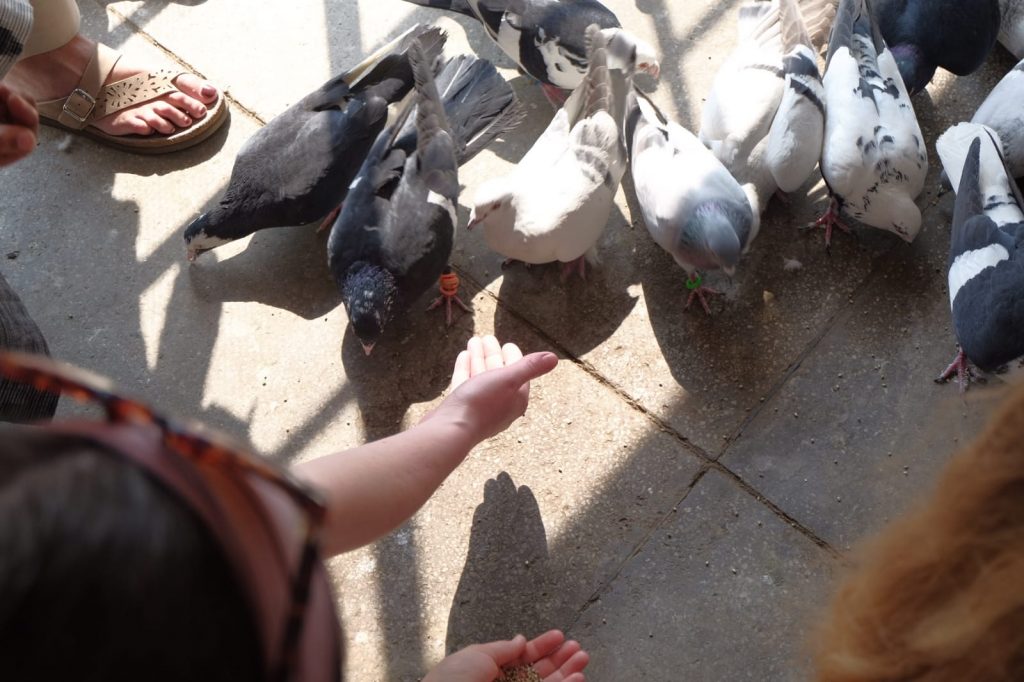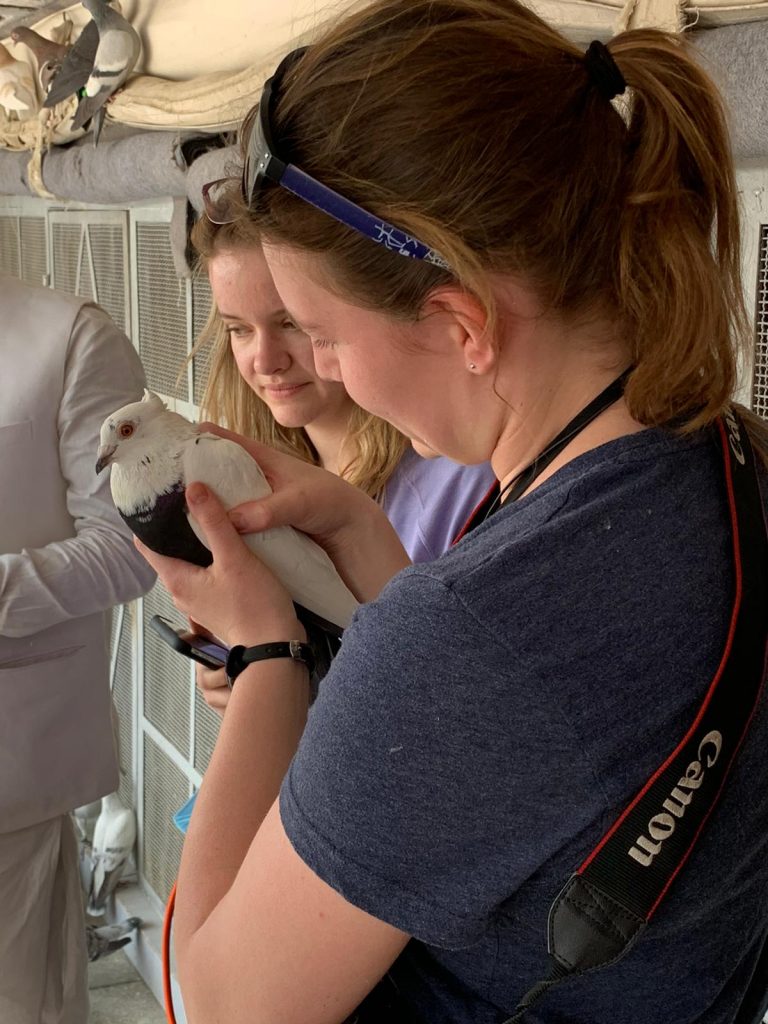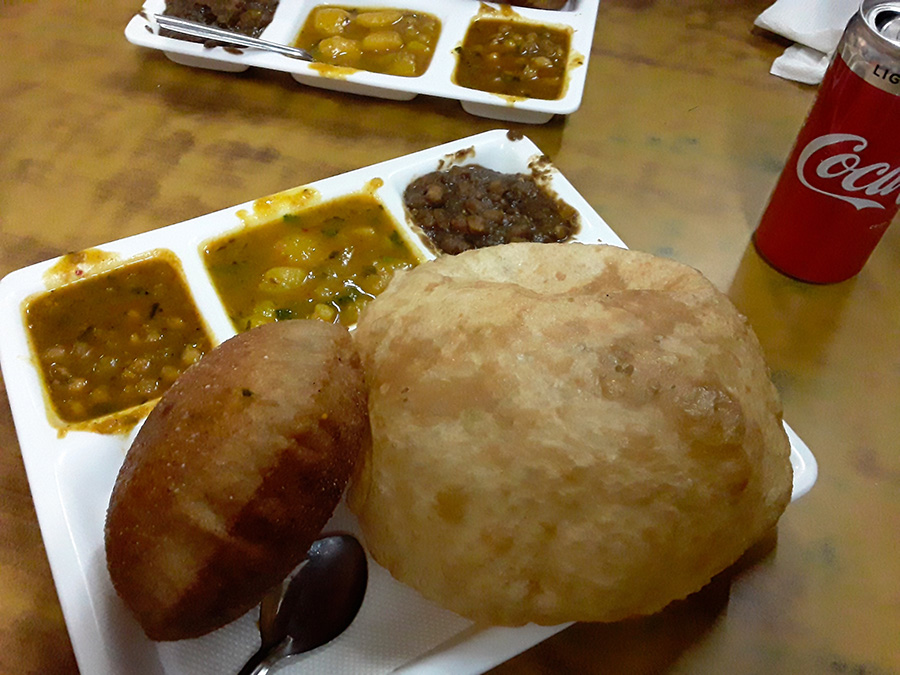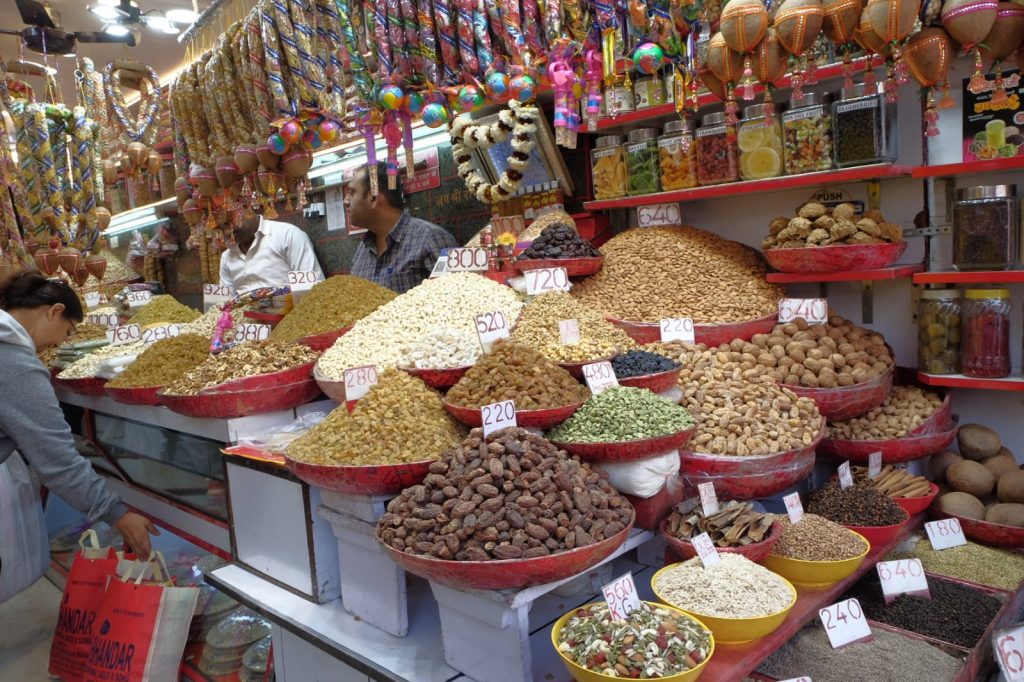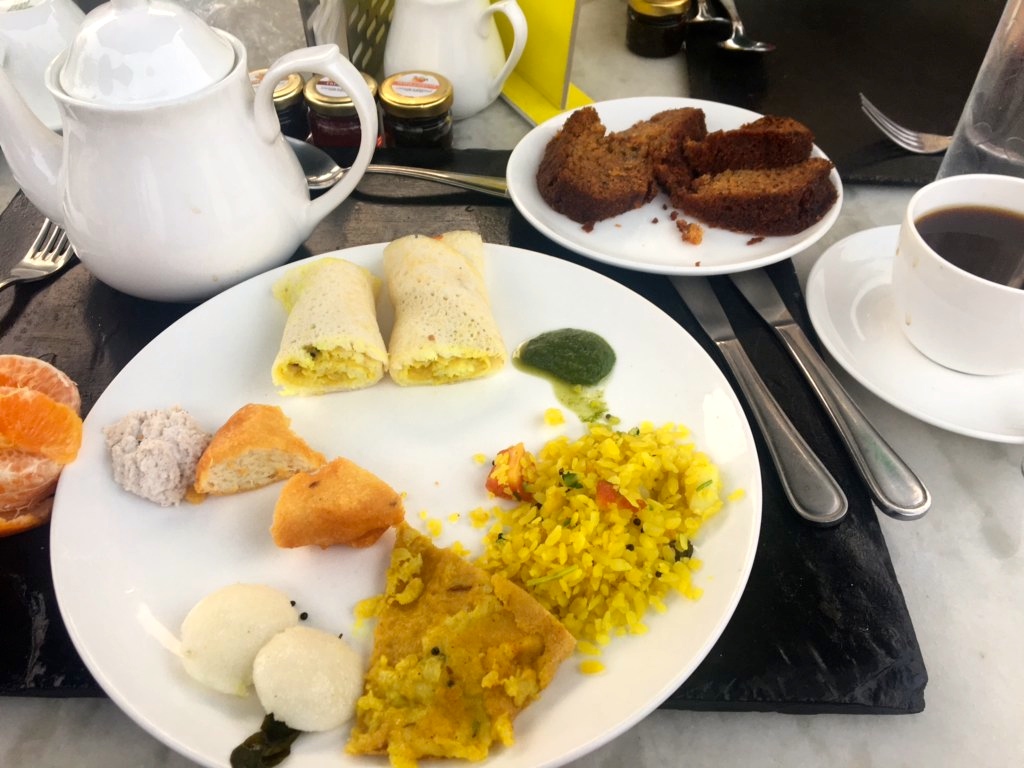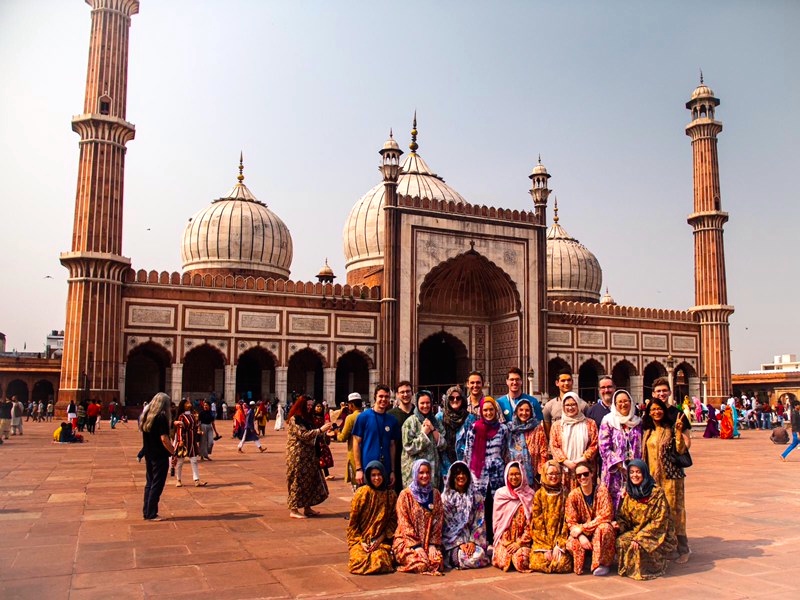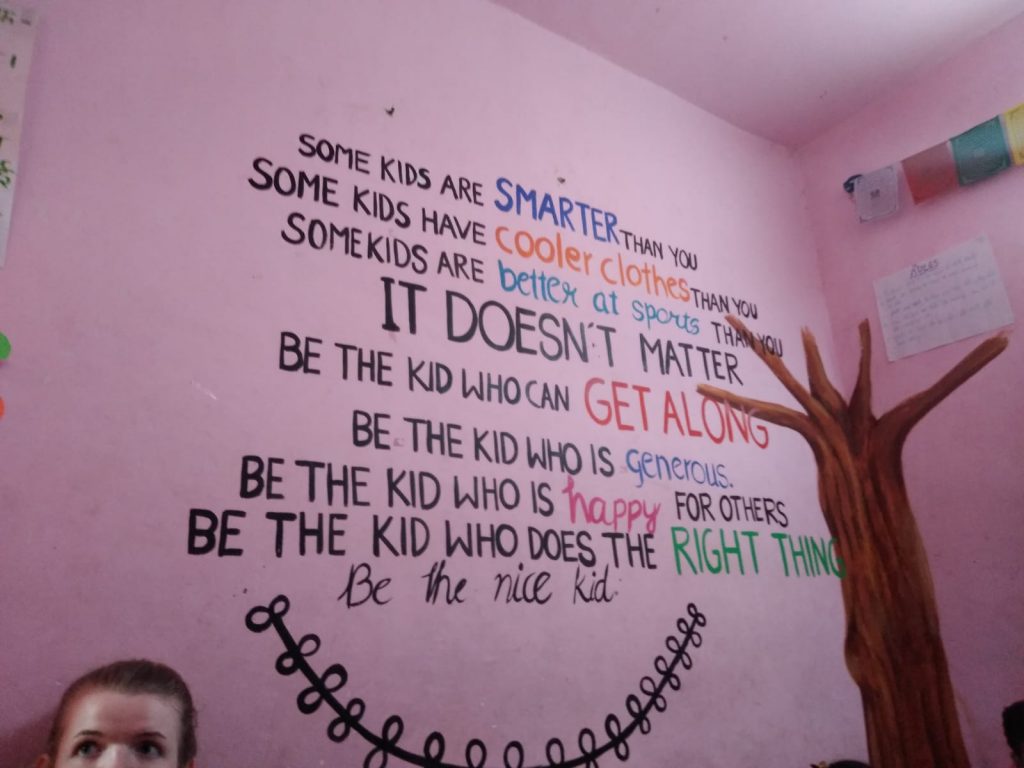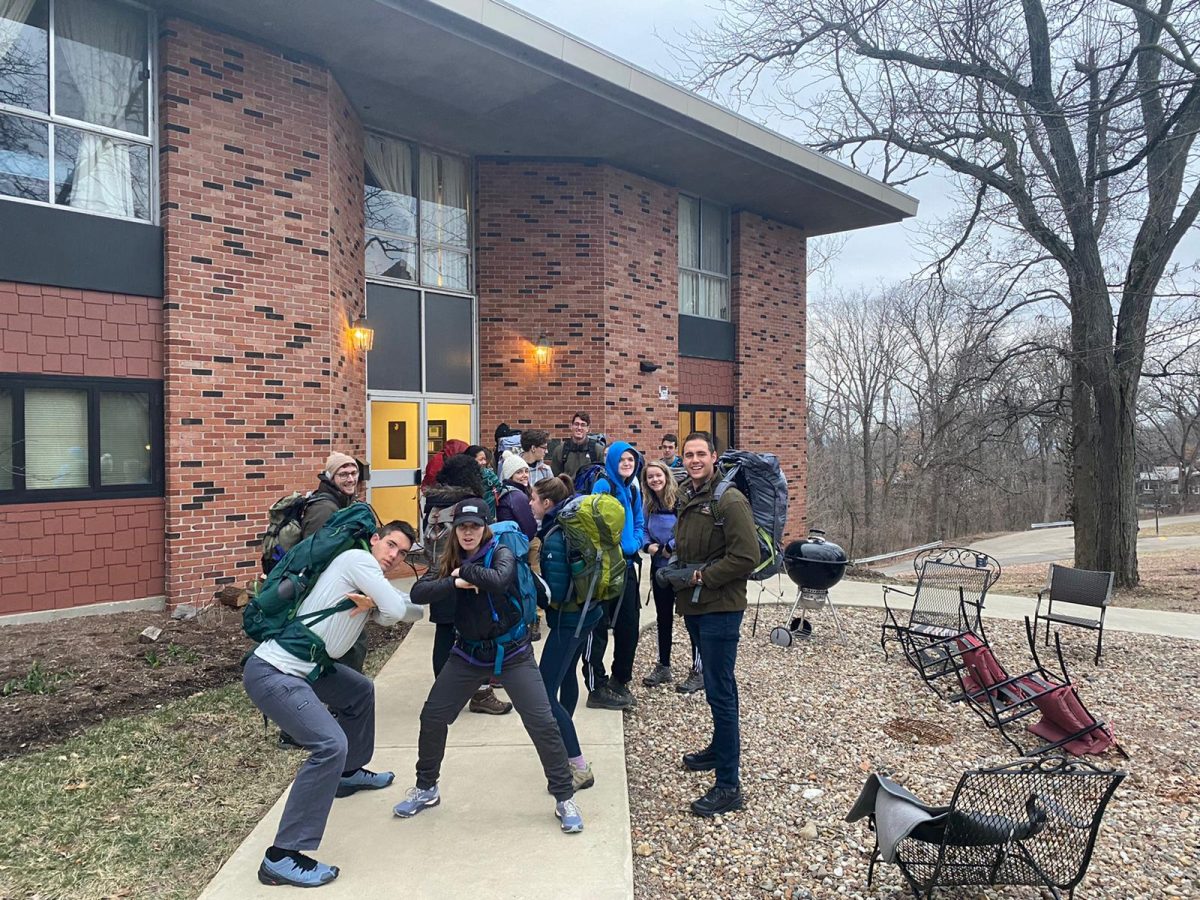By Sammy Keller
Partition- it’s one of the most influential events in the history of the Indian Subcontinent, and something that we don’t think about very much. As part of our abroad preparation, we talked about the basics of partition. Once we got into country, we were able to speak with partition survivors, former military officers, and this week we visited the newly opened partition museum in Amritsar, in the Indian state of Punjab.
We’ll talk about the details of partition throughout this blog, but here are some of the basics. Partition was the separation of the Indian Subcontinent into two sovereign states- India and Pakistan. This partition came with the end of the British colonial rule of India, which for a long time exploited the region, the people, and continuously fired up the tensions between Hindus and Muslims- therefore, when the British were leaving, the Muslim League advocated for an independent state for Muslims, which would later become known as Pakistan.
We went to the Partition museum with Dr. Baljinder Singh, a former professor and president at Khalsa College in Amritsar. He was our guide during our time in Amritsar and he took us to the Wagah Border ceremony, a lecture at Khalsa College, and the Golden Temple.
When you walk into the museum, you come into a somewhat narrow room with beautiful floor tiles. On the left is an outline of the museum, which out lines the stages of partition. The outline goes: Why Amritsar, Punjab, Resistance, The Rise, Differences, the Prelude to Partition, Boundaries, Independence, Borders, Migration, Divisions, Separations, Remembrance (also called “The Room of Hope”).
As you enter through the glass door into the museum, you see a plaque with a summary of partition. The first paragraph reads “18 Million lives impacted.” This gives you the scope of the kind of impact that this event had on the region and the amount of lives that were impacted by the partition of 1947.
In the first gallery, you get an explanation of why they chose Amritsar for this museum, which opened not too long ago. During partition, Amritsar become a gathering point for people leaving India for Pakistan, as it was the last stops for trains leaving for Lahore, which was now part of Pakistan. Amritsar was also where the trains pulled in with refugees from “the other side”, as the plaque phrased it.
Prior to partition, Amritsar was an economic center in India, but once the impacts of partition swept through the country, Amritsar suffered heavy hits on its economy and its population, The population continued to drop for years and would not recover from partition until the 1960s, when it experienced its first population growth again. Today, Amritsar has a steady population of roughly 1,500,000 and it is considered the Sikh capital of the world, as it is home to the Golden Temple.
As you enter into the next gallery, you get a brief explanation of what life was like in Punjab, seeing some traditional clothing that is given to daughters at their wedding. But when you turn around, you see a wall covered in images, letters, and documents that explained the ways that the Indians were humiliated by the British during the colonial rule. An example that stood out to one of the students in our group included a small framed document that a bunch of signatures on it. It was a very official document, but all it did was that it allowed an Indian to have a chair when meeting with a British official. It wasn’t a chair at a conference or seat at the table of the local government- it was permission to have a chair when meeting with a British official. Otherwise, the Indian would have to sit on the floor. That’s the kind of treatment that many Indians received for a very long time before we reach the next galleries.
During the early 1900s, Britain continued its foreign policy of “divide and rule”, which included splitting up certain territories to make it easier to rule them. One of the territories that was split up was Bengal, one of the major states in the region. The goal was to split up the region for administrative purposes, but also split up Hindus and Muslims. There was a copy of the signed bill in the gallery that made the separation of Bengal official in 1905. However, the response in the state was incredibly strong, and the British eventually lost that battle when they reunified Bengal in 1911.
As we move along the timeline, or into the next gallery, we reach the most defining time period that would pave the way for partition- 1930-1945, the period of recovery from the Great Depression and World War II. During that time, the call for Indian independence became louder and louder. However, at the same time, the Muslim’s desire for an independent state became louder as well. It was first articulated in 1930 by Allama Muhammad Iqbal. The desire for a Muslim state was so strong because if India were to be one state, Muslims would make up a minority in India, ruled by Hindus. However, on a global scale, Muslims living in the Indian Subcontinent make up a large percentage of Muslims around the world. Today, India still has the second largest population of Muslims, trailing behind Indonesia and followed by Pakistan.
The 1940s marked the height and the end of World War II, which took its tool on the British economy. At the end of the war, the British Labour party came into power, which represented a dropping desire for colonial rule in India due to the financial crisis as a result of the war.
The talks about Indian independence and a solution about the land were represented by Gandhi and Jinnah, the leader of the Muslim League, who are both considered the fathers of their respective nations, and strong advocates for independence from Great Britain. Unfortunately, that was about the only thing that they could agree on. Gandhi did not want partition to happen, but Jinnah’s mind was set on a separate state where Muslims could live in peace. A reporter at the time, Viceroy Wavell, summed the outcomes of the talks up as:
“Jinnah wants Pakistan first and independence afterwards, while Gandhi wants independence first with some kind of self-determination to be granted to Muslims by a provisional government that would be predominantly Hindu.”
Jinnah believed that Hindus and Muslims were two different people and it was therefore not possible for them to live peacefully as one country, and therefore the focus would shift from protecting Muslim interests to an independent statehood for them.
As we continue our journey through the timeline, we now reached 1946, which marked a very dark predictor of the events that would follow once Pakistan and India would be granted independence.
Negotiations between Jinnah and Jawaharlal Nehru, leader of the Congress Party, fell apart after Nehru made some remarks that upset Jinnah and Muslim community. Nehru said that the Congress party would negotiate “unfettered” by previous agreements, which sent a strong message to Muslims and other minorities that their future would be uncertain if Nehru got his way.
Jinnah called for “Direct Action”, and violence broke out immediately in a number of states and cities, such as Bengal, Punjab, Bombay, Mumbai. The political climate had been incredibly tense for months and years, and this was the final drop that caused clashes between Muslims and Hindus throughout the country. Hindus attacked Muslim communities in one place, but Muslims would retaliate in a different part in response- just like it would happen a year later once the borders were drawn and Pakistan and India would be independent.
We’ve now reached a point in the museum where the idea of partition became a reality, and Nehru, as well as the British governor to India, Mountbatten, tried to persuade Jinnah to remain as one country. It was for nothing, and Pakistan would become a country.
The Independence of India bill was introduced and passed the British parliament on July 18th, 1947. Independence for India was set for August 14/15, 1947- much sooner than many expected. Arguably, Great Britain was just trying to find a solution and get out as soon as possible.
Who would draw the borders? Mountbatten was clearly not in favor of partition, so he did not see himself fit to take on that responsibility. His solution was to find someone who was qualified and had no bias whatsoever. Therefore, his pick was Sir Cyril Radcliffe, who had never been to India before. He arrived in India on July 8th, 1947, and his report must be finished before August 14th– just about over a month to divide and entire country into two.
Much of the responsibility fell onto Radcliffe because the Border committee was evenly split on many of the border issues, making Radcliffe the tiebreaker. The report was finished on August 12th, but Mountbatten did not want to release the new borders until after Independence had been announced. Therefore, people were left in suspense and uncertainty until August 17th, which is widely seen as a huge mistake because people started moving months before the Independence bill was passed because they saw it coming and they wanted to get out as soon as possible. However, they couldn’t be sure if where they were going would even be part of the country that they were hoping to go to.
The day came, and Pakistan and India were declared independent. Fun fact: Mountbatten was required to be present in both countries in order to declare them independent, so Pakistan was declared independent on August 14th, 1947 and India on August 15th.
People started moving before partition even happened, which unfortunately means that the violence broke out way before the two countries were even established. Once partition was officially declared, it just got worse.
6.5 million Muslims fled west, from India into Pakistan, while 4.7 million Hindus and Sikhs fled east, into India. In the east, 2.7 million moved from East Pakistan into India, and 0.7 million went the other way. East Pakistan would become Bangladesh in 1971, but during Partition it was given to Pakistan. Geographically, it is not connected to the rest of Pakistan, but is surrounded by India.
The migration gallery of the museum states that 18 million people moved during partition, which is actually the highest estimate. Numbers range from 10-18 million based on your source. The gallery explains further how people moved, emphasizing the importance of railways- if you look up partition on google, you will see a lot of images of trains that are packed to the roof with people trying to flee to safety.
Money matters- especially during partition. If you were rich, you could leave by car or even by plane. If you had some money, you might be able to flee by train. If you were poor, you had to walk with a cart pulled by a horse or a donkey. The museum showed images of caravans of refugees trying to make it to their new home- wherever that would be. The largest human caravan is attributed to partition, with over 100,000 people walking into India.
The refugee gallery was very different from the rest of the museum- throughout the museum there was some traditional music, but the refugee gallery was different. There was no music, and the room was much larger than the other rooms. The noises that you heard were recordings from radios during partition or videos that showed the stories of partition survivors. Photos and drawings of refugees on the road or in camps decorated the walls, showing the fear and desperation in their faces.
This should be a whole separate blog, and people have written incredible books on this topic, but I can’t write about partition and not talked about the horrors that women faced. Women were left completely helpless during partition. Rape and sexual assault happened everywhere, India report 50,000 abducted women, Pakistan 33,000. To protect the family’s honor, fathers would kill the females in their family to ensure that they don’t fall into the hands of the enemy. Other times, the women were encouraged to commit suicide. Many would do that by jumping into the wells in their villages. Sometimes they survived because bodies had already piled up at the bottom, so they would climb up and try again- and again.
Life did not become easier for refugees once they arrived in their new homes. Refugees accounted for roughly 2% of India’s population in 1951, which was about 365,000,000 at the time. People struggled to find new homes for their families, find jobs, which made it so much harder to process that they had just lost so much.
To make things worse, both countries lost their respective founders. Gandhi was assassinated in January of 1948, and Jinnah died in August that year. Both were regarded as the fathers of their nations- their deaths were a huge loss to their countries.
The gallery of hope finished up our tour at the museum, but it doesn’t end the events of partition. Partition continues to affect these countries, for they have both lost so much for their independence. The gallery of hope pays tribute to those who lost their lives during partition, but it’s also a place of hope, as the name of the room reveals. While both countries have suffered a lot, and they have unfortunately not been able to reconcile since partition, the room reminds us that, no matter how much Indians lost during partition, they country was able to rebuild and become a strong nation.
The center of the room is decorated with a tree made from wire. The leaves are messages that were hung up. Some of them are written in Sanskrit, and some of them are in English. The messages pay tribute and give hope that one day they may live in peace. One leaf reads:
“You can divide land and property, but no one can divide the human spirit!”

